|
One of the joys of guiding Forest Bathing walks is meeting people who feel a deep connection to parks and trees. It is in this capacity that I met Rita and John, who invited me to guide in East River Park this coming weekend and who, along with their community, are passionate stewards of East River Park and its trees. History Located on Manhattan's Lower East Side, East River Park is a beloved public green space that was established in the early 1900s as a way to provide a recreational area for the growing population of immigrants in the area. In the 1930s, the park underwent a major expansion, thanks in part to the Works Progress Administration (WPA), a New Deal program that provided employment opportunities for thousands of Americans during the Great Depression. The WPA oversaw the construction of new playgrounds, sports fields, and other amenities, as well as the planting of thousands of trees and shrubs. It is many of these very same trees that recently have been cut down in connection with a redevelopment initiative. Some are still standing - 80+ year old oaks and plain trees - but too are to be cut down. They are marked with numbered, coin-like metal tags, like dog tags worn by soldiers going into battle, carrying an indicator of doom. Over the years, the park has continued to evolve and adapt to the changing needs of the community. In the 1960s and 70s, the park became a popular gathering spot for counterculture movements, with music festivals and political rallies drawing large crowds to the amphitheater and surrounding areas. Redevelopment In recent years, the park has faced a number of challenges, including threats from development and climate change. In 2018, plans were announced to overhaul the park as part of a $1.45 billion flood protection project, which has been met with controversy and opposition from community members and activists. The project, known as the East Side Coastal Resiliency (ESCR) plan, aims to protect the surrounding neighborhoods from flooding in the event of a major storm. The plan includes building a flood wall and raising the elevation of the park by several feet. One of the most controversial aspects of ESCR is the impact it will have on the park's trees and the people who value their pesence. The plan calls for the removal of more than 1,000 mature trees, some of which are over 100 years old, to make way for the construction of a flood wall and raised parkland. This has been a major point of contention for park advocates, who argue that the trees are an essential part of the park's ecosystem and a vital source of shade, clean air, and wildlife habitat. In addition, the removal of so many trees would have a significant impact on the park's aesthetics, changing the character of the space and removing an important element of its history. To address these concerns, the city proposed a replanting plan that includes the planting over 2,000 new trees, as well as shrubs and grasses. However, critics argue that the new trees will take years to grow to maturity and will not provide the same benefits as the old-growth trees that are being removed. The impact of the redevelopment plan on the trees also raises broader questions about the value of urban green spaces and the trade-offs involved in urban planning. While flood protection is a critical issue for the city, the removal of so many trees from a beloved public park raises questions about the priorities of city officials and decision making considerations. Tree Neighbors Several individual trees in the park that have become well-known and beloved by locals over the years. Alarge copper beech tree near the park's southern entrance estimated to be over 150 years old has affectionately been nicknamed by locals as "Old Man," and it has become a cherished symbol of the park's history and continuity. Another notable tree in the park is a large sycamore that stands near the amphitheater. This tree, known as the "Pirate Tree," has a distinctive split trunk that resembles a pirate ship's bow. It has become a popular spot for children to play and climb, and it is often decorated with homemade pirate flags and other treasures. Another notable tree was referred to as the "Mother Tree" by some locals. A large cottonwood, it stood near the amphitheater and was estimated to be around 80 years old. The Mother Tree was a beloved feature of the park and was known for its massive size and distinctive shape. It provided shade and shelter to park-goers and was a popular spot for picnics and gatherings. Unfortunately, the Mother Tree was among the trees that were slated for removal as part of the ESCR plan. Its removal was a significant blow to the community, and many residents and activists protested the decision. In response to the outcry, the city pledged to preserve a portion of the Mother Tree's trunk and incorporate it into a new seating area near the amphitheater. The loss of the Mother Tree underscores the importance of preserving and protecting urban green spaces and the connections that people form with the natural world around them.
0 Comments
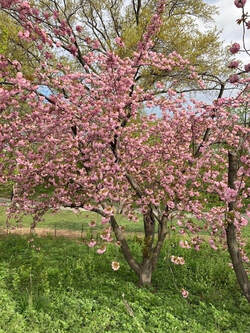 Central Park in cherry blossom season greets you with an explosion of delicate pink and white petals and a sweet fragrance of blooming flowers. Petals flutter down, covering the ground near the trees in a layer of pink and white petals. It’s hard to resist picking up petals and feeling their softness and fragility on your fingertips. I feel a sense of gratitude for these brief moments of beauty and serenity in the midst of a busy city. While cherry trees are located throughout the park, there’s a reason Cherry Hill, on the north side of the 72nd Street transverse, has its name. This area provides not only abundant trees in bloom but also a stunning view of The Lake and The Ramble beyond. The trees in bloom form a canopy of pink and white flowers, offering a sense of serenity and calmness amid nearby chatter of visitors taking in the beauty of the park, a peaceful mix of the human world and nature. The cherry trees in Central Park are mainly of the Yoshino variety, which is native to Japan. They were gifted to New York City by the Japanese government in 1912 as a symbol of friendship between the two nations. Today, the cherry trees have become an iconic part of Central Park and are eagerly awaited by New Yorkers and tourists. In addition to their beauty, cherry blossom trees also hold cultural significance. In Japan, cherry blossoms symbolize the fleeting nature of life and are associated with the Buddhist concept of impermanence. The annual cherry blossom festival in Japan, known as Hanami, is a time for celebration and reflection on the beauty and transience of life. Here is a short poem by Matsuo Basho, a renowned Japanese haiku poet, about cherry blossoms, which have been a symbol of beauty and transience in Japanese culture for centuries: "Amidst falling blossoms I watched the petals scatter And felt: this is my life." A haven for runners, bikers, roller bladers, birders, dogs walkers, Autumn pulls at the imagination. As the temperature cools, the daylight hours wane, and the air gives off an earthy smell of decay
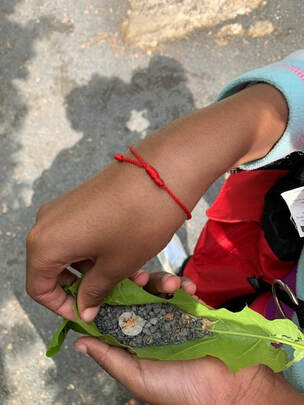 Just as nature’s creations present in a range of colors, from birds' vibrant plumage and flowers' alluring array to the infinite variations of human skin tone, nature is agnostic about the color of skin of humans who enjoy outdoor pursuits. Flora and fauna have no preference or bias about whether the humans they encounter are white, pink, brown, or black, or any other shade. Yet, for too long people of color have felt, and have been, excluded from outdoor pursuits, like backpacking, hiking, climbing and swimming. For People of Color living in urban areas, outdoor resources often are more challenging to access. To reach a hiking trail may require a car, and the most well-tended and spacious urban parks are often not conveniently located. The challenges of accessing nature results in reduced participation, which in turn reinforces perceptions that PoC do not belong in nature. It is in this context that the encounter between dog owner Amy Cooper and birder Christian Cooper in Central Park’s Ramble is troubling beyond the alarming potential for Amy Cooper’s call to the police complaining of harassment by “an African American man in the Ramble” to result in a gentle birder, who happens to be black, falling victim to policy brutality. Chris Cooper is a familiar, friendly face to many who frequent the park's wooded areas. Yet, Amy Cooper’s reaction highlights the all-too-frequent perception that people of color do not belong in the outdoors, or if they are there, it is for menacing reasons. The encounter drew appropriate outrage, and coupled with recent horrific murders of black people by police no doubt contributed to the strong, continuing protests for racial equity. Until only recently, organizations aimed at connecting people with the outdoors conveyed a sense that outdoor pursuits were the domain of white people. While this likely was inadvertent, benign oversight can have insidious results, reinforcing perspectives about black people in the out of doors. Fortunately, this is changing. The incident in Central Park gave rise to Black Birders Week, an initiative to celebrate black nature enthusiasts, and called out the challenges for black people pursuing outdoor activities (witness the shooting death of Ahmaud Arbery while jogging). Organizations like REI, the Sierra Club, and the Appalachian Mountain Club increasingly are diversifying the people pictured in their marketing materials and have featured programs and discussions aimed at equity and inclusion. Organizations like Outdoor Afro, Black Urban Growers, are emerging to facilitate greater participation by black people in nature-focused activities, and right here in New York City, Vivian Kurnitz’s Harlem Wellness Center has launched a number of initiatives to engage black people with nature-based experiences. Since its founding in 2017, a core part of Urban Edge’s mission has been Community Outreach and enabling a nature connection, and its benefits, for those for whom access to nature has been challenging. While we are on pause now during the COVID-19 crisis, when we can resume gathering people together it will be with added vigor in enhancing equities in access to nature. These are important steps, but there is more to be done. 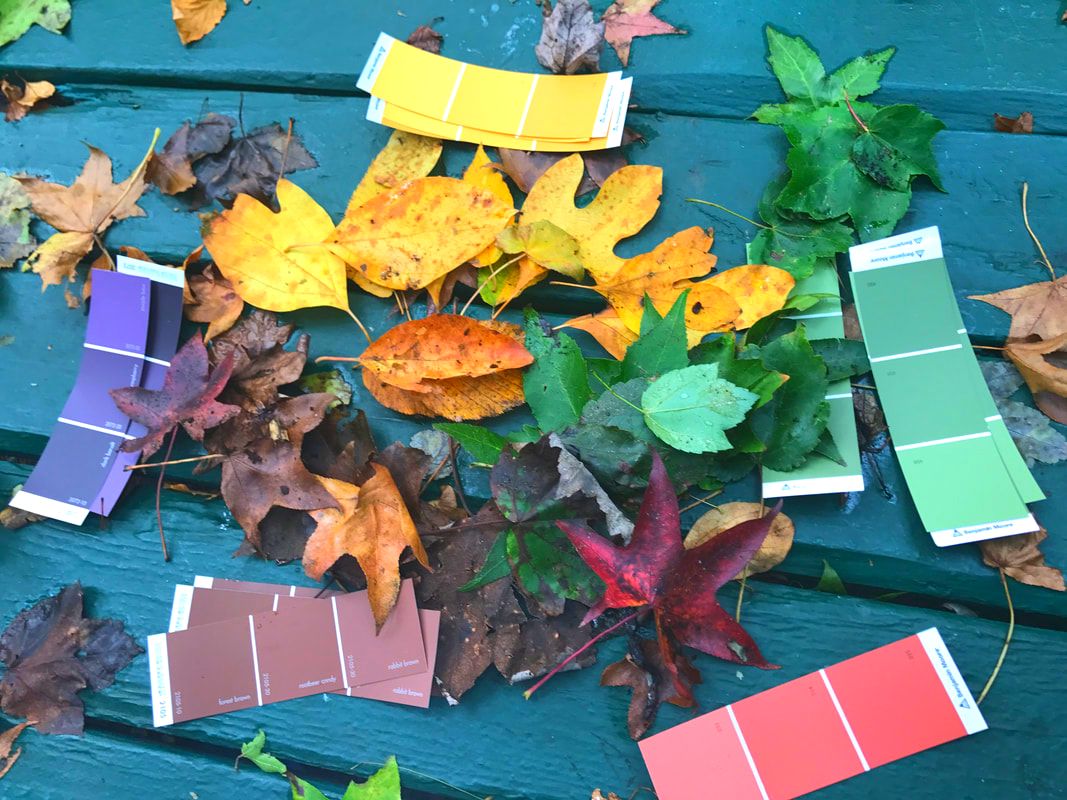 The events of the past several weeks—the murders of George Floyd, Ahmaud Arbery, and Breonna Taylor by police officers--exposes the extreme systemic racism and violence directed at certain human beings because of the color of their skin. These deaths follow the horrific murders of Black people by law enforcement over the past several years--Sandra Bland, Michael Brown, Eric Garner, Freddy Gray, and sadly many more. And these deaths overlay the wretched circumstances of the last few decades: mass incarceration, persistent discrimination, and lack of access to decent housing and environmental conditions, banking, education, and health care. Which follow the shame of the past three centuries: slavery and all of its brutality and Jim Crow. Racism is a human invention. It does not exist in nature. Yes, to quote Tennyson, there is the image of nature “red in tooth and claw”, a world of Darwinian competition. But that is different. Nature does not discriminate, and there is much we can learn from our interactions with nature. How we admire the beauty of nature’s kaleidoscope of variation! The rainbow of colors of birds and flowers; the alluring shades of green among plants; the stripes, spots, blotches, of mammals fill us with awe and wonder. Would we ever suggest that one hue of flower is to be singled out, castigated, and destroyed? Would we dare say that a blue flower is somehow less worthy than a pink flower, or that a yellow bird is less of a bird because of its tint? And yet, all too often people of color find themselves viewed and treated as lesser humans simply because of their skin color. All too often the color of one’s skin can lead to a destiny that is diminishing, with opportunities denied, and futures destroyed. This is a human invention, and we have the capability to remedy the widespread racism that has become impossible to “white wash”. Let us learn from our encounters with nature to think no less of fellow human beings because of the color of their skin. 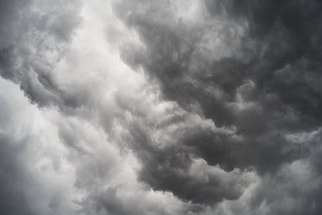 We sat at the edge of brokenness, with a view of what wasn't right with the world: the tempo accelerating, how we worship speed - faster, faster, instantaneous communication, purchasing, travel (to Paris in just a few hours!); the constant thirst for information, driven by its constant production, from 24/7 news, to daytime talk shows, late night talk shows, Tweets, and Facebook feeds, the newest, the latest, the greatest, the Fear of Missing Out; how we pillaged and mined the earth for its resources, gluttonously feeding our ever-growing appetites, and to our own peril careless about the needs of other creatures and the planet's finely tuned equilibrium. And then it happened, a pandemic of Biblical proportions as if out of an Old Testament story, something about a king, greedy, shrouded in gold, and dismissive of the needs of his people. Like the voice of a divinity, it announces to the people, who had lost their way, "There is something bigger than you!" A force, like the plagues of ancient Egypt, crossing boundaries of state and country and political divides, necessitating that we slow down and take stock. It awakens us from the whirling giddy miasma of modernity, and shakes us into remembering the timeless things that matter most -- our loved ones and communities, to breathe, and the beauty of nature and the world around us. At the same time that we grieve for the loss of lives and economic hardship brought on by the pandemic, perhaps too there is a way this moment offers medicine for our times, medicine that supports the sentiments of Earth Day on its 50th anniversary. --- Things Fall Apart By William Butler Yeats Turning and turning in the widening gyre The falcon cannot hear the falconer; Things fall apart; the centre cannot hold; Mere anarchy is loosed upon the world, The blood-dimmed tide is loosed, and everywhere The ceremony of innocence is drowned; The best lack all conviction, while the worst Are full of passionate intensity. Surely some revelation is at hand; Surely the Second Coming is at hand. The Second Coming! Hardly are those words out When a vast image out of Spiritus Mundi Troubles my sight: somewhere in sands of the desert A shape with lion body and the head of a man, A gaze blank and pitiless as the sun, Is moving its slow thighs, while all about it Reel shadows of the indignant desert birds. The darkness drops again; but now I know That twenty centuries of stony sleep Were vexed to nightmare by a rocking cradle, And what rough beast, its hour come round at last, Slouches towards Bethlehem to be born? On the eve of the Jewish holiday Yom HaShoah--Holocaust Remembrance Day--we commemorate the millions of people murdered by the actions of Nazis and their collaborators. Many of us are familiar with stories about families hiding out during that time. Some survived. Many perished.
As we find ourselves in a time of hunkering down, avoiding gatherings, isolating in close quarters with a limited number of people, I have been thinking about the far more extreme experience of those hiding from Nazis during World War II. This is with full awareness that the comparisons here are not to be overstated--on the one hand a deadly political force intent on the annihilation of a people; on the other hand a virus, its impact influenced by political and socioeconomic factors, but the virus itself devoid of willful intent to harm. I delve into thoughts about how people in hiding during that horrific time endured the hardships of sequestering for months on end in basements, in attics, hidden away behind concealed doors, with no ability to go outside, eating only what meager food was provided and being thankful for that. What a luxury it is, even amid this challenging time of COVID-19 pandemic, that we can walk freely within our homes, can select our food and cook, that we can reach out to friends and family by phone, Zoom, texting, and email, and , if we're lucky, can maintain our schooling and employment. And, I am reminded of the words of Anne Frank and her recognition of the power of nature to bring solace: “The best remedy for those who are afraid, lonely or unhappy is to go outside, somewhere where they can be quite alone with the heavens, nature and God. Because only then does one feel that all is as it should be and that God wishes to see people happy, amidst the simple beauty of nature. As longs as this exists, and it certainly always will, I know that then there will always be comfort for every sorrow, whatever the circumstances may be. And I firmly believe that nature brings solace in all troubles.” How fortunate we are that we can still go outside, can admire the changes in nature that come with the arrival of spring and can look upon nature as a constant. 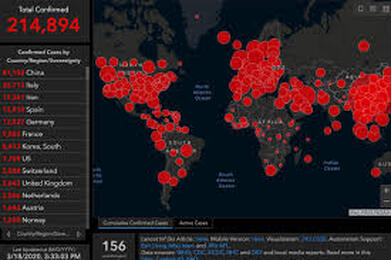 The COVID-19 crisis highlights many things about our ways of being: our woeful lack of preparedness for a pandemic; the broader need for health care; the power of a force of nature so much greater than ourselves and our political structures and leanings; and the impact of job, housing and wage disparities among populations, among them. It also, and perhaps most strikingly, underscores our interconnectedness. Indeed, central to the coronavirus' spread are the complex webs of links among beings. The virus jumped species, moving from non-human creatures to people, and once rooted within people, each point of human contact becomes its own node of countless connections, and on and on. It's our nature to be social creatures. We engage with family, friends, work colleagues, and fellow travelers on boats, airplanes, buses, and trains. We engage with fellow shoppers, theater-goers, congregations, book club and sports and exercise pals. We hug, we embrace, we walk hand-in-hand. With the virus persisting on surfaces and in droplets of moisture in the air, our awareness of even traces of human connection become amplified. If I touch a door knob that was touched by someone with the virus who coughed into their hand, and I then rub my eyes, what then? If I handle groceries touched by someone with the illness and then scratch my nose, will I become infected and infect my family? If I walk along a path where an infected person recently sneezed and I inhale that same air, will I succumb to the virus? We become attuned to the invisible strands of countless connections as if we are wearing special lenses or possess a superhero-like powers akin to a UV light that discerns not just actual human encounters but residues of encounters, including those that are intermediated by the surfaces we touch and the air we breathe. So much of what it means to be human--so much of how we define ourselves--is in relation to others and the roles we play as members of multiple communities. Part of what makes combating the virus' spread is the need to isolate. This runs against our nature, how we identify ourselves, and our deep need to connect with others. Most glaring in the midst of this crisis are the daily tragedies: countless heart-wrenching experiences of illness and death, loss of jobs, disrupted schooling, and unprotected health care workers. Another, albeit minor, awareness is how interconnected -- and interdependent -- we all are. We are witnessing how a virus originating in central China has, by virtue of the extent to which humans travel and connect with one another, reached people all over the world. Yet, what is alarming in the context of a virus that causes illness and death and other hardship, is also an indicator of our human interconnectedness. May we one day be able to appreciate that interconnectedness in a context separate from the horrors of a pandemic. It is a strange feeling to experience emptiness in the city. Streets, subways, and stores only recently packed with people are abandoned. The city's propulsive energy, its alchemy of people, traffic, and commerce, and with these, perpetual noise and motion, has dissipated amid the coronavirus lockdown. It wouldn't be surprising to see tumbleweed rolling across Broadway, as if in a deserted western town. Absent the hustle and bustle stand the stark horizontal grid of streets and verticality of architecture, like an empty set design awaiting its players, mirroring the empty sets of closed-down Broadway. The street grid, a rigid, fixed geometry that holds, harnesses, and thus enables the city's usual percussive beat and allows endless creative spark and serendipitous encounter rests now like an idling factory without purpose. The great emptiness resulting from coronavirus-mandated retreat indoors makes it evident that it is people who give the city its sense of vitality, who collectively transform it into a fantastic gigantic organism. As alienating and dehumanizing as a metropolis can sometimes be, we see in this time of crisis the capacity of closely packed people to create an environment that pulsates with energy. How we look forward to the time when that energy resumes. |
About this Blog
Hi! I'm Nancy Kopans, founder of Urban Edge Forest Therapy. Join me on an adventure to discover creative ways to connect with nature in your daily life, ways that are inspired by urban surroundings that can reveal unexpected beauty, with the potential to ignite a sense of wonder. Archives
April 2023
Categories
All
|
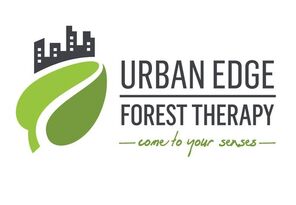
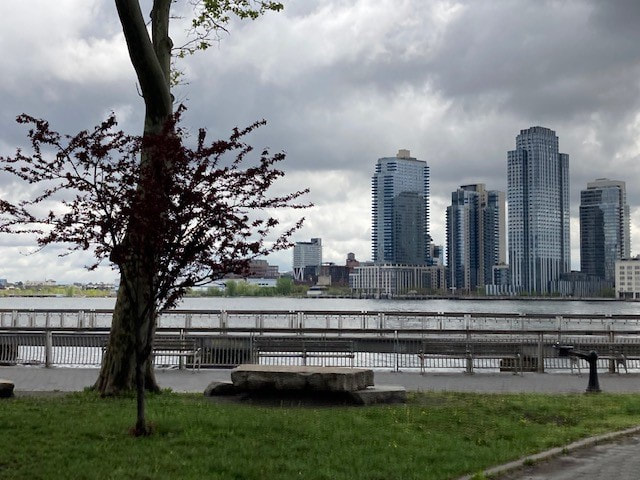
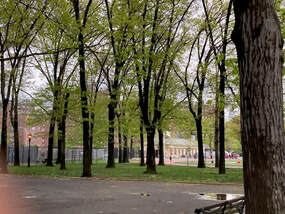
 RSS Feed
RSS Feed